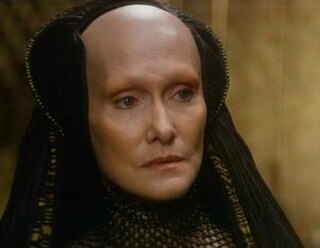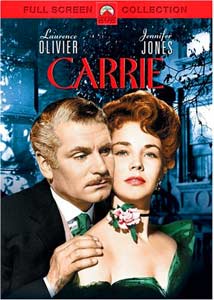
Chapterhouse: Dune is a 1985 science fiction novel by Frank Herbert, the last in his Dune series of six novels. It rose to No. 2 on The New York Times Best Seller list.

House of Cards is a 1990 British political thriller television serial in four episodes, set after the end of Margaret Thatcher's tenure as Prime Minister of the United Kingdom. It was televised by the BBC from 18 November to 9 December 1990. Released to critical and popular acclaim for its writing, direction, and performances, it is considered one of the greatest British television shows ever made.

Joyce Maynard is an American novelist and journalist. She began her career in journalism in the 1970s, writing for several publications, most notably Seventeen magazine and The New York Times. Maynard contributed to Mademoiselle and Harrowsmith magazines in the 1980s, while also beginning a career as a novelist with the publication of her first novel, Baby Love (1981). Her second novel, To Die For (1992), drew on the Pamela Smart murder case and was adapted into the 1995 film of the same name. Maynard received significant media attention in 1998 with the publication of her memoir At Home in the World, which deals with her affair with J. D. Salinger.

Alia Atreides is a fictional character in the Dune universe created by Frank Herbert. Introduced in the first novel of the series, 1965's Dune, the character was originally killed in Herbert's first version of the manuscript. At the suggestion of Analog magazine editor John Campbell, Herbert kept her alive in the final draft. Alia would next appear as a main character in both Dune Messiah (1969) and Children of Dune (1976). The character is brought back as a ghola in the Brian Herbert/Kevin J. Anderson conclusion to the original series, Sandworms of Dune (2007).

Gaius Helen Mohiam is a fictional character in the Dune universe created by Frank Herbert. She is a Bene Gesserit Reverend Mother, and initially appears in the 1965 novel Dune and its 1969 sequel, Dune Messiah. Mohiam also has a major role in the Prelude to Dune prequel trilogy (1999–2001) and the Caladan Trilogy (2020–2022) by Brian Herbert and Kevin J. Anderson.

The Delinquents is a 1989 Australian coming-of-age romantic drama film directed by Chris Thomson from a screenplay by Clayton Frohman and Mac Gudgeon, based on Criena Rohan's 1962 book of the same name. It stars Kylie Minogue and Charlie Schlatter as the main characters Lola and Brownie, and was filmed in Brisbane, Maryborough and Bundaberg, Queensland.
The Women of Brewster Place is an American television miniseries that was broadcast on March 19 and 20, 1989 on ABC. The miniseries is based upon the critically acclaimed 1982 novel of the same name by Gloria Naylor. It was produced by Oprah Winfrey's Harpo Productions with a teleplay by Karen Hall. The show's theme song was performed by American R&B singer Vesta Williams, who performed both the opening and closing credits.

Paradise is a 1998 novel by Toni Morrison, and her first since winning the Nobel Prize in Literature in 1993. According to the author, Paradise completes a "trilogy" that begins with Beloved (1987) and includes Jazz (1992).

Margot, Lady Fenring is a fictional character from the Dune universe created by Frank Herbert. She is featured in Herbert's Dune (1965), and is a major character in the Prelude to Dune prequel trilogy (1999–2001) and the 2008 novel Paul of Dune by Brian Herbert and Kevin J. Anderson. She later appears in the Caladan Trilogy (2020–2022). Margot is the Bene Gesserit wife of Count Hasimir Fenring, a close friend of the Padishah Emperor Shaddam IV, but is loyal to the Sisterhood.

Carrie is a 1952 American romantic drama film based on the novel Sister Carrie by Theodore Dreiser. Directed by William Wyler, the film stars Jennifer Jones in the title role and Laurence Olivier as Hurstwood. Eddie Albert played Charles Drouet. Carrie received two Academy Award nominations: Costume Design, and Best Art Direction.

Polly of the Circus is a 1932 American pre-Code MGM drama film directed by Alfred Santell and starring Marion Davies and Clark Gable.

Just Above My Head is James Baldwin's sixth and last novel, first published in 1979. He wrote it in his house in Saint-Paul-de-Vence, France.
Ekaterina Sedia is a Russian fantasy writer. She immigrated to the United States and attended college in New Jersey to obtain her Ph.D. Her most famous work is The Alchemy of Stone, a steampunk novel that examines sexism and class bigotry. Sedia's other novels include The Secret History of Moscow, According to Crow, Heart of Iron, and The House of Discarded Dreams. She has also written several short fiction stories, poems, and nonfiction books, as well as edited anthologies of short stories. Several of her publications have been nominated for awards and/or have made a well-known reading list. In addition, Sedia was the editor for Jigsaw Nation and the World Fantasy Award-winning Paper Cities: An Anthology of Urban Fantasy. In addition to writing, she teaches ecology and evolution courses as a professor at Stockton University in Galloway, New Jersey.

Loving Frank is a 2007 American novel by Nancy Horan. It tells the story of Mamah Borthwick's illicit love affair with Frank Lloyd Wright and the public shame they experienced in early twentieth century America. It is a fictionalised account told from Borthwick's perspective, based on research conducted by Horan; it is her debut novel. It depicts Borthwick’s life as it became intertwined with Wright's between the years of 1907 through 1914. By following the artistic aspirations and travels of the two main protagonists, the novel portrays the social mores of the times in the United States and Europe.
Madea's Family Reunion is an 2002 American stage play written, directed and produced by Tyler Perry. It stars Tyler Perry as Madea, D'Atra Hicks as Jackie, David Mann as Mr. Brown, and Tamela Mann as Cora. The live performance released on VHS and DVD was recorded live in New Orleans at the Saenger Theatre in January 2002.

Get Low is a 2009 drama film directed by Aaron Schneider, and written by Chris Provenzano and C. Gaby Mitchell. It tells the story of a Tennessee hermit in the 1930s who throws his own funeral party while still alive. The film stars Robert Duvall, Bill Murray, Sissy Spacek and Lucas Black. Duvall was awarded the Hollywood Film Festival Award for Best Actor for his lead performance.
Marva Wright was an American blues singer.
Pearl Cleage is an African-American playwright, essayist, novelist, poet and political activist. She is currently the Playwright in Residence at the Alliance Theatre and at the Just Us Theater Company. Cleage is a political activist. She tackles issues at the crux of racism and sexism, and is known for her feminist views, particularly regarding her identity as an African-American woman. Her works are highly anthologized and have been the subject of many scholarly analyses. Many of her works across several genres have earned both popular and critical acclaim. Her novel What Looks Like Crazy on an Ordinary Day (1997) was a 1998 Oprah's Book Club selection.












